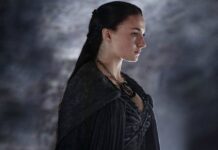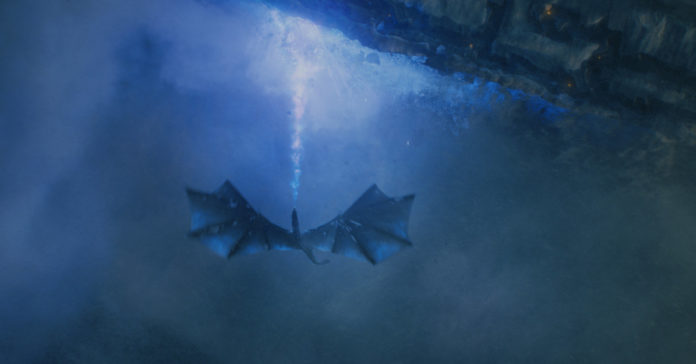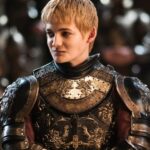All hope for a swift defeat of the Night King’s army came crumbling down with the Wall in the “Game of Thrones” Season 7 finale, “The Dragon and the Wolf.”
While nothing good was ever to come from the White Walkers’ commander-in-chief laying his cold, undead hands on Viserion, now viewers have seen the ice dragon’s destructive capabilities up close.
But what, exactly, does an ice dragon breathe? Ice? Fire? We talked to “Dragon and the Wolf” director Jeremy Podeswa to get the details.
“The way I looked at it was, when the sept burned down, that was green fire, and so then the dragon is going to have some kind of blueish fire,” he said. “It’s certainly still fire — it has the ability to burn the Wall and melt snow. But it’s going to have a different kind of magical quality to it, because it’s coming from an undead dragon.”
So ice dragons still breathe fire ― just a different, more dangerous varietal that could prove especially disastrous for other magical things, like Daenerys’ (Emilia Clarke) two living dragons. And in order to make it all the more shocking, the team behind “Game of Thrones” took particular care to get that blue flame just right.
Read on for more about the Night King’s newest weapon, what it was like to shoot the 50-page “G8 summit” between nearly all the series’ major characters, and where Littlefinger’s surprise death leaves the Stark kids up in Winterfell.
How did you and the behind-the-scenes crew decide to illustrate the ice dragon sequence?
There was a little bit of R&D involved in that in terms of exactly what it should look like and feel like, what the hue of it should be, what the impact of it should be. We actually shot the lighting effect on the Wall before we did anything else, so we had to know very early on what the impact of that flame was going to be before we even knew what the actual flame was. When we were shooting the Wall set, we had the lighting effect on the Wall that was caused by the flame, but we hadn’t created the flame yet. But we had a pretty good idea at that point.
I’m sure everyone is also asking you about the dragon pit scene at the beginning, but it was fantastic to watch as a fan. What were some of the challenges in shooting that?
That was actually a very involved sequence, one of the more complex things I’ve ever filmed. It’s really almost a play. It was about 50 pages of script between the walking to the dragon pit and then entering of the dragon pit with almost every character in the show in one place. So it has this kind of — it’s almost like a G8 summit. We really did rehearse it like a play. We did early rehearsals in Belfast. We went down to Spain and did further rehearsals on location where we shot it. Then it was about five to six days of full-on shooting.
Did there end up being any scenes ― or pointed glaring between characters ― that you or the showrunners wanted to include but couldn’t for the sake of time?
No, actually, amazingly we got through it incredibly efficiently. I think it was interesting going in because a lot of the cast were thinking, “How are we ever going to get through this?” because it was so dense, and there were so many people, and it required so much coverage. One thing that’s great about Dan and David’s writing is that it’s full of small character detail. So every glance, every look has this past history that we’re bringing into this sequence between characters that haven’t seen each other in a long time.
Everything is loaded. Everything has meaning and has to be captured. But this was quite meticulously planned and choreographed, and we decided how much we were going to bite off every single day. It felt like a real achievement, actually, to get all those moments.
Throughout Season 7 we’re afraid that Arya and Sansa have turned on one another, and then finally you got to reveal they actually hadn’t. What was it like creating that sequence?
Well, it was very important to me that the audience was led along this trajectory, and continue to believe the sisters are at crossroads — that Arya might actually be plotting to kill Sansa, and Sansa might be plotting to kill Arya. So at the beginning of the scene with Littlefinger, it really does feel like a turn that we’re not expecting, when we realize that all the Stark kids are in this together, and they’re bonding over the common enemy of Littlefinger.
I think it’s really the first time that we see the three children reunited, and very strongly reunited, for a single purpose. We see the strength of the family that was there before all the horrible things that happened, and now they’re back together. I think that trajectory was really important, and nobody wanted to give anything away, so the actors were incredibly committed to this notion before that we really should believe that anything was possible — any horrible thing is possible. And it was very satisfying, at the end, for them to show their solidarity, and for the audience to see how strongly connected they all are.
I’m sure you’ve heard the feedback from viewers that this season is moving really quickly. From your standpoint, how does the pacing compare to previous episodes you’ve worked on?
You know, in general I don’t really think too much about pacing, myself. You kind of look at each script, and what each script demands. I directed the premiere episode and the finale, which are quite different, because in the premiere episode you’re laying a lot of track, and you’re continuing stories that were left at the end of last season. So that has its own kind of rhythm to it, and didn’t really have any huge action sequences or anything like that, but it was very, very strongly character-based. It probably laid a little less track than previous premiere episodes had — you so feel like you get right in the story and things are moving quickly.
And then in the finale, so much of what it’s about is continuing the idea of these character interactions between characters who haven’t been together in a long time or who have never been together. So even though it’s not action, action, action, it’s full of drama and full of tension and potential for things to go awry. This episode, for me, kind of had everything. It really did feel like I was making a feature film with this episode — it was so big and so layered and, tonally, so complex.
This interview has been edited and condensed for length and clarity.




















![[Book Review] The Blade Itself (The First Law Trilogy) by Joe Abercrombie](https://bendthekneegot.com/wp-content/uploads/2018/01/1516047103_maxresdefault-218x150.jpg)



















